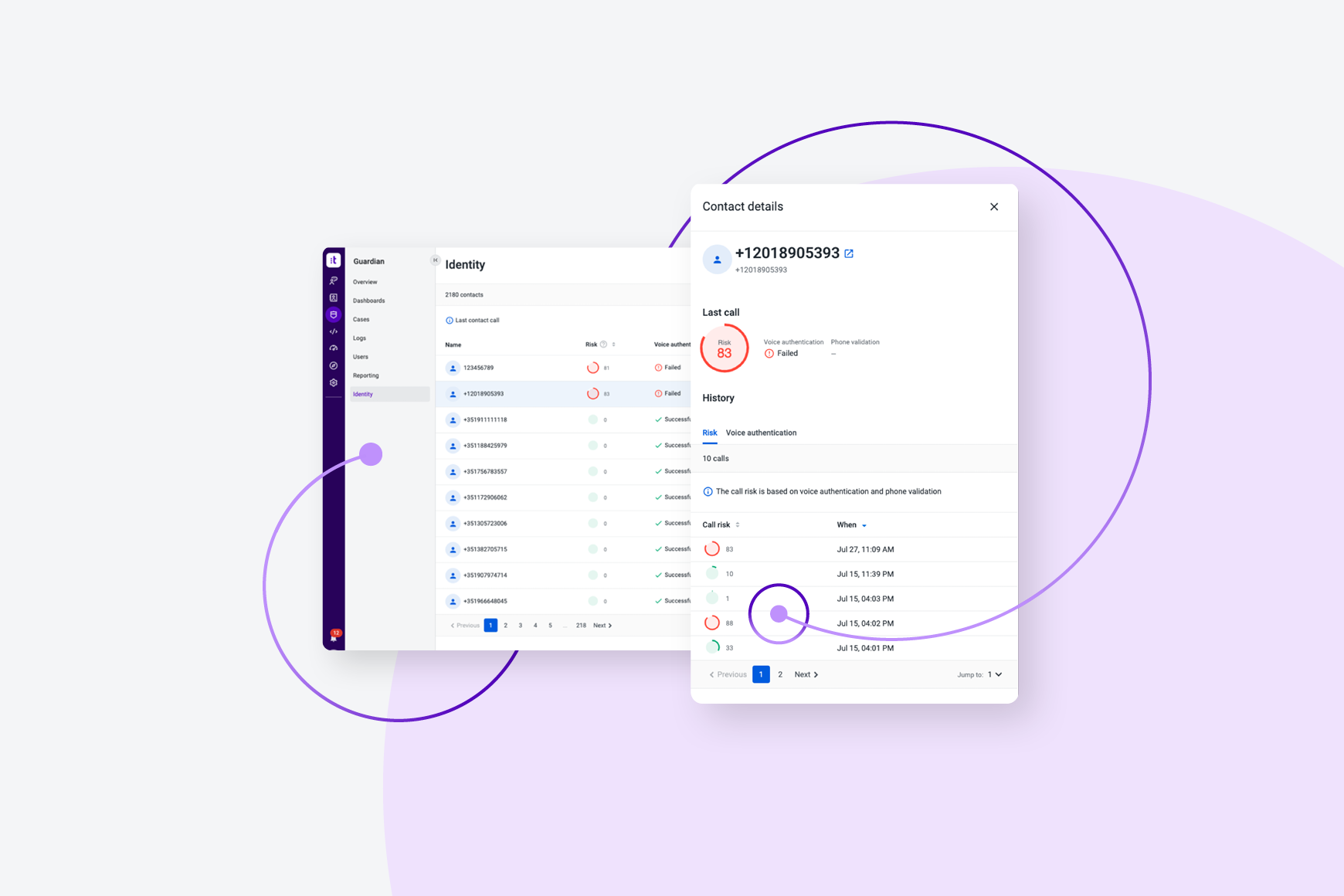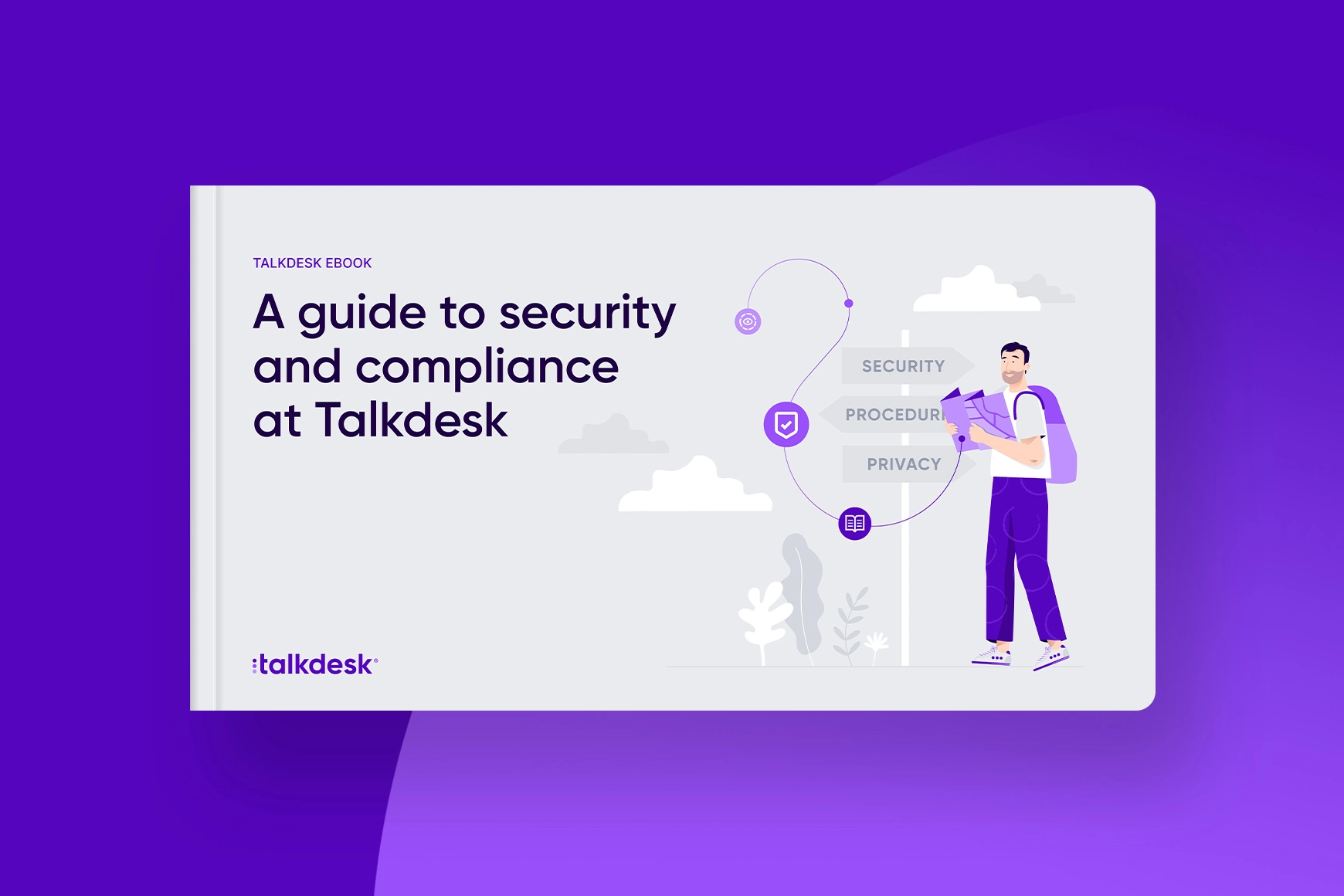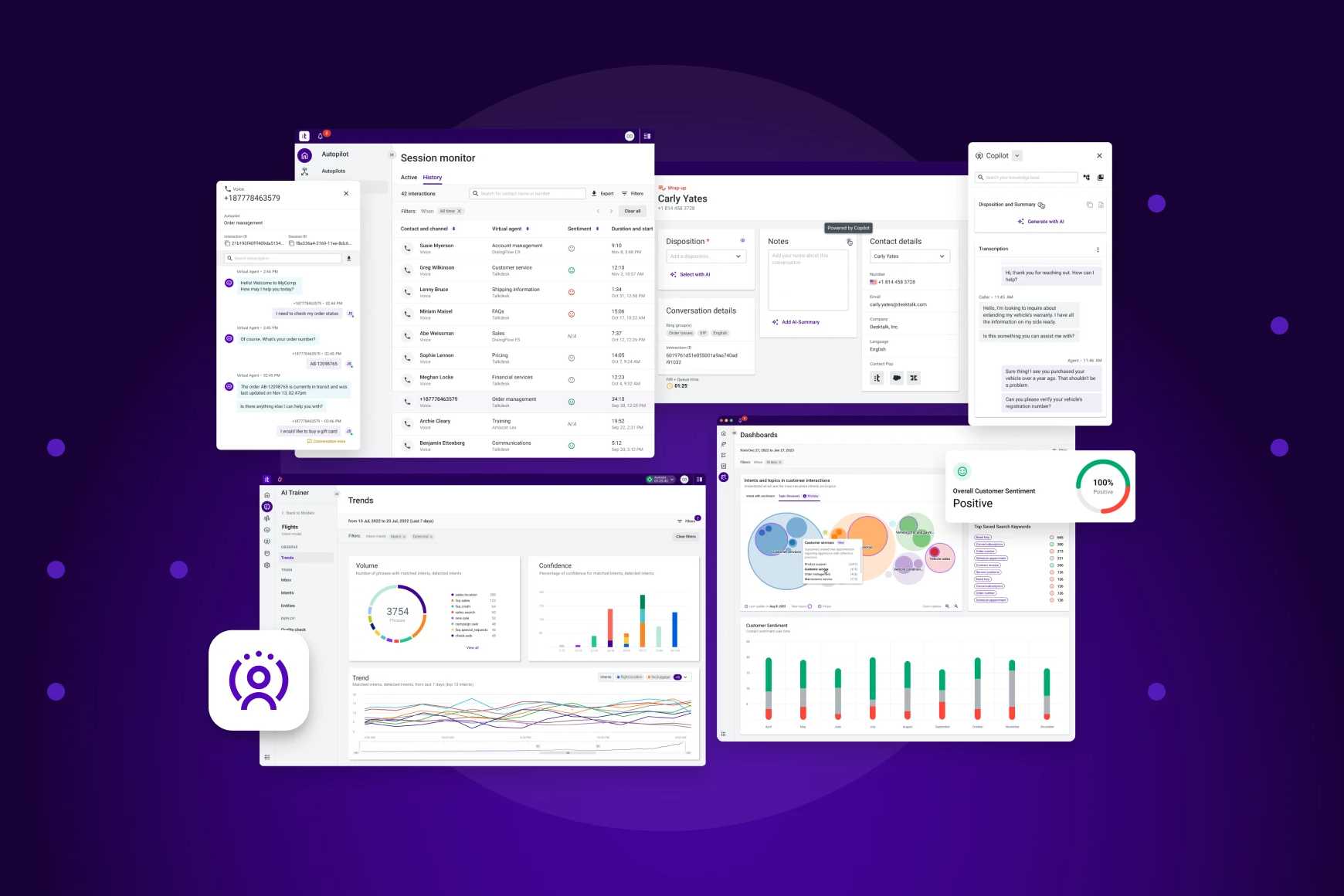Contact Center Trends
8 best practices for customer data management in contact centers

By Celia Cerdeira
0 min read

Effective customer data management involves collecting, analyzing, storing, and using your customer information, ensuring all data is handled securely and responsibly. With the growing amount of data that contact centers handle daily, it’s essential to have good practices to manage this information effectively. Not only does this help in complying with data protection regulations, but it also enhances the quality of customer service you can provide.
In this article, we’ll delve into:
Benefits of customer data management.
Customer data management requires careful handling and strategic planning, but when done correctly, it can benefit your organization immensely. You can leverage customer data to understand your customer base better, personalize your offerings, and improve your operations.
Better compliance and security.
Proper user data management helps businesses like yours comply with data privacy regulations and ensures the security of customer information. It provides a framework for safely storing, accessing, and using customer data, preventing breaches and non-compliance penalties. Beyond these practical benefits, effective data management also builds trust with customers. Knowing their personal information is handled carefully and securely encourages customers to continue engaging with your business, fostering long-term relationships.
As regulations around data privacy continue to evolve, a robust customer data management system can help you stay ahead. It provides the flexibility needed to adapt to new rules and keeps businesses like yours from falling behind.
Enhanced customer service.
Historical access to customer interactions significantly benefits efficient customer data management. It enables customer support teams to provide more informed and efficient assistance, improving customer satisfaction and loyalty.
With comprehensive customer data at their fingertips, your customer service agents can tailor their approach to each customer, addressing their needs and concerns. This personalized service often results in positive customer experiences and can lead to increased customer retention rates. It also allows for more proactive service—your agents can anticipate issues before they arise and take steps to prevent them, further enhancing the customer experience.
Improved data quality and accuracy.
Quality customer data management ensures customer data is accurate, up-to-date, and consistent. This reduces errors, better decision-making, and more effective marketing strategies.
Inaccurate or outdated data can lead to misguided business decisions and missed opportunities. Regular updating and cleaning customer data means businesses can ensure they have the most relevant information. It allows for more precise targeting in marketing campaigns, better product development based on customer needs and preferences, and more efficient resource allocation.
High-quality data can provide insights into market trends and customer behavior, enabling you to stay competitive and responsive to changes in the market. In a business landscape where data is king, maintaining its quality and accuracy is not just beneficial—it’s essential.
Eight customer data management best practices.
The following are eight actionable customer data management best practices to improve customer data management:
1. Ensure secure integrations across all applications.
Your contact center software must be securely integrated with other applications. This secure integration is necessary to maintain a seamless data flow across different platforms, reducing the chances of data leaks or breaches. It also helps maintain data consistency, as any updates or changes one application makes will automatically reflect in others.
In addition, secure integrations facilitate better collaboration and communication among different teams in a contact center. It ensures everyone can access the same, up-to-date customer information, leading to more coordinated and efficient service.
2. Ensure GDPR and HIPAA compliance if needed.
Compliance measures such as GDPR and HIPAA are integral when handling your customer data. An essential aspect of this is consent management, where customers give explicit permission to use their data.
In addition to consent management, you need to implement data minimization practices, which involve collecting only the necessary data and not storing it longer than needed. Conduct regular audits to promptly identify and address any compliance issues. Such proactive measures help avoid penalties and enhance a company’s reputation as a responsible data handler.
3. Ensure PCI compliance.
Compliance with payment card industry (PCI) standards is essential for businesses that handle credit card transactions. PCI compliance ensures credit card data is stored, processed, and transmitted securely, protecting customers from financial fraud.
To achieve PCI compliance, make sure you implement strong access control measures, regularly monitor and test your networks, maintain a vulnerability management program, and establish an information security policy. Regular PCI compliance assessments can also help identify and rectify potential vulnerabilities before they can be exploited.
4. Use voice biometrics tools.
Voice biometrics tools can reduce the likelihood of customer data getting stolen and ensure it’s stored securely. These tools use unique voice characteristics to verify a person’s identity, providing an additional layer of security.
They can also enhance your customer experience by making authentication processes faster and more convenient. Instead of remembering passwords or answering security questions, customers can simply use their voices to verify their identities.

DEMO
Product demo: Talkdesk Identity
Improve your customers’ experience and help protect their data—and your contact center—with self-service authentication powered by voice biometrics.
5. Implement access control measures.
Implementing access control measures is important for sensitive customer data. It limits the number of people accessing specific data, reducing the risk of data breaches.
Access control measures can include password protection, two-factor authentication, and permission settings that restrict access based on roles or responsibilities. Regular reviews and updates of these measures are also necessary to ensure they remain effective as the organization grows.
6. Define and disclose clear data retention policies.
Define clear data retention policies and disclose these to customers. Transparency about data usage builds customer trust and ensures legal compliance.
Data retention policies should specify how long data will be stored, when and how it will be deleted, and the circumstances under which it might be shared with third parties. They should also provide details on how customers can access, update, or delete their data.
7. Complete regular cleansing procedures.
Regular data cleansing procedures help maintain the accuracy and relevance of customer data. These procedures involve removing outdated, incorrect, or redundant data, so that the remaining data is accurate and useful.
Data cleansing not only improves the quality of your customer data but also enhances your operational efficiency. It helps avoid mistakes caused by bad data and makes data analysis more accurate and insightful.
8. Invest in agent training.
Your agents should be trained on best practices for managing customer data. They are often on the front lines of data collection and handling, so their knowledge and skills are vital.
Training should cover data privacy regulations, company policies on data handling and storage, and tools and software for data management. Regular refresher courses can also be beneficial to keep agents updated on any changes or new developments in the field of data management.
Talkdesk cloud contact center offers enterprise-class security.
Talkdesk AI-powered cloud contact center platform offers enterprise-class security, ensuring businesses manage customer data securely and efficiently.
The advanced security features offer maximum protection against threats and breaches. The platform employs voice biometrics for quick authentication, improving the customer experience and adding another layer of security. This technology uses unique voice characteristics to verify a person’s identity, making it extremely difficult for unauthorized individuals to access sensitive data.
Talkdesk takes compliance very seriously. Our AI-powered contact center platform ensures adherence to global standards such as GDPR and HIPAA. This commitment to compliance and secure integration across all applications significantly reduces the risk of data leaks or breaches. Talkdesk also supports PCI compliance, essential for businesses that handle credit card transactions, providing confidence that financial data is handled securely.
In addition to these measures, Talkdesk:
- Provides options for data residency, allowing businesses to comply with regulations and corporate policies on where and how to store data.
- Consistently monitors its AWS accounts for any potential cloud infrastructure security risks, ensuring its system remains secure at all times.
- Conducts frequent audits and follows a strict data retention policy to ensure that data is not stored longer than necessary, minimizing the risk of unwanted data exposure.
Talkdesk cloud contact center helps businesses maintain compliance with various regulations, providing a reliable, secure platform for managing customer interactions. Download our eBook to understand the robust measures we take to ensure customer data is secure.

EBOOK
A guide to security and compliance at Talkdesk
Download this ebook for an overview of the security and compliance infrastructure at Talkdesk and how we keep our customer data safe. Understand our policies and procedures around web app access and protections, information security, privacy, and business continuity.
FAQs.
What is customer data management?
Customer data management involves businesses’ collection, analysis, storage, and use of customer information. It’s a crucial part of providing personalized and efficient customer service. It includes practices such as data integration, data cleaning, and data protection. With proper customer data management, businesses can create more targeted marketing campaigns and develop products or services that better meet their customers’ needs.
What is the role of customer data management?
The role of user data management is to ensure businesses have accurate, up-to-date, and relevant information about their customers. This allows for better decision-making, improved customer service, and effective marketing strategies. Additionally, it helps in predicting future trends, understanding customer behavior, and building long-term customer relationships. It also plays a crucial role in ensuring compliance with data protection regulations.
What are the 4 types of customer data?
The four types of customer data are identity data (names, addresses), descriptive data (demographics, hobbies), behavioral data (purchase history, product usage), and attitudinal data (customer satisfaction, preferences). Identity data helps in personalizing interactions, while descriptive data enables segmentation for targeted marketing. Behavioral data provides insights into customer habits and preferences, and attitudinal data helps understand the perception and sentiment of customers towards a brand or product.






